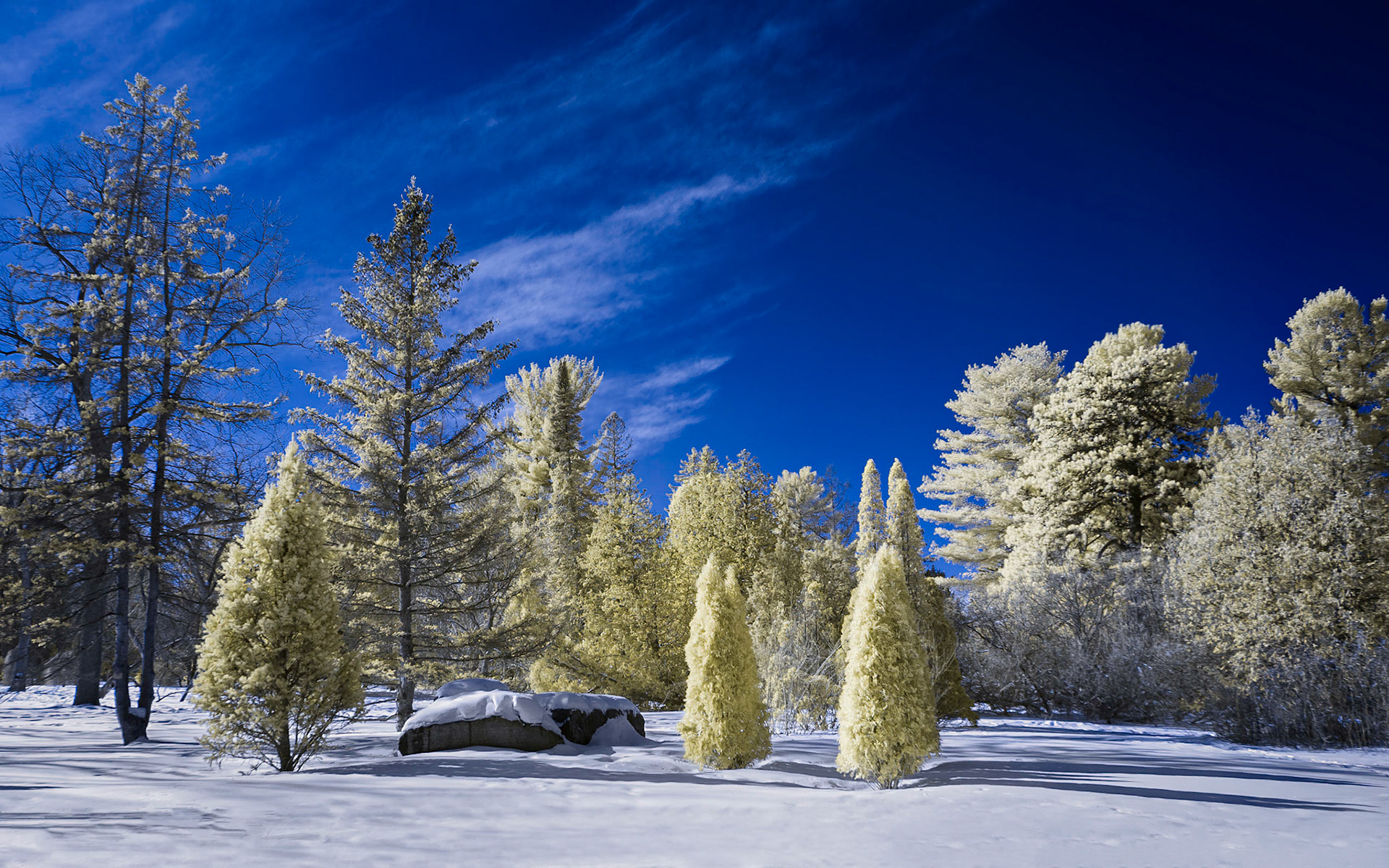
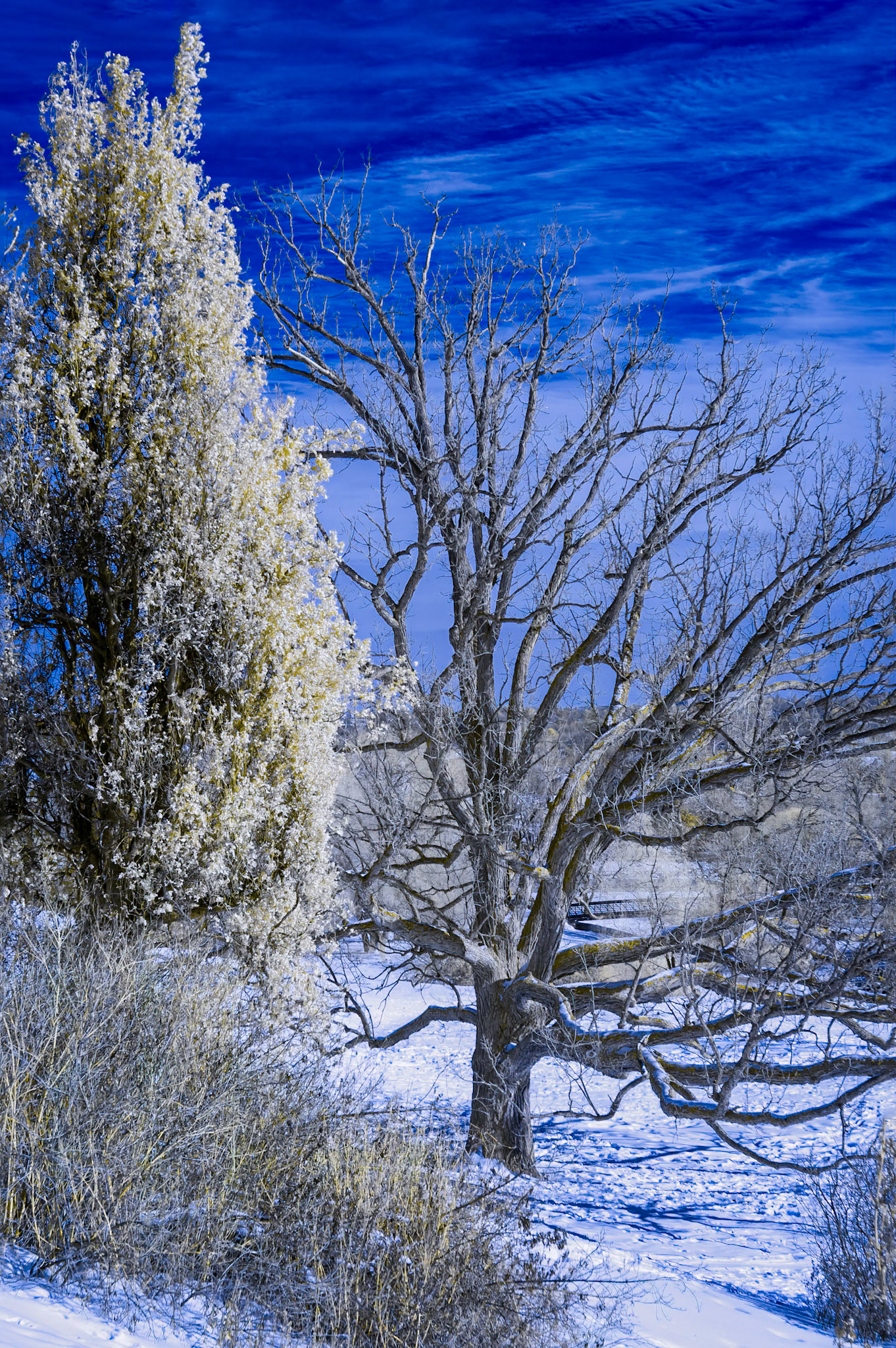
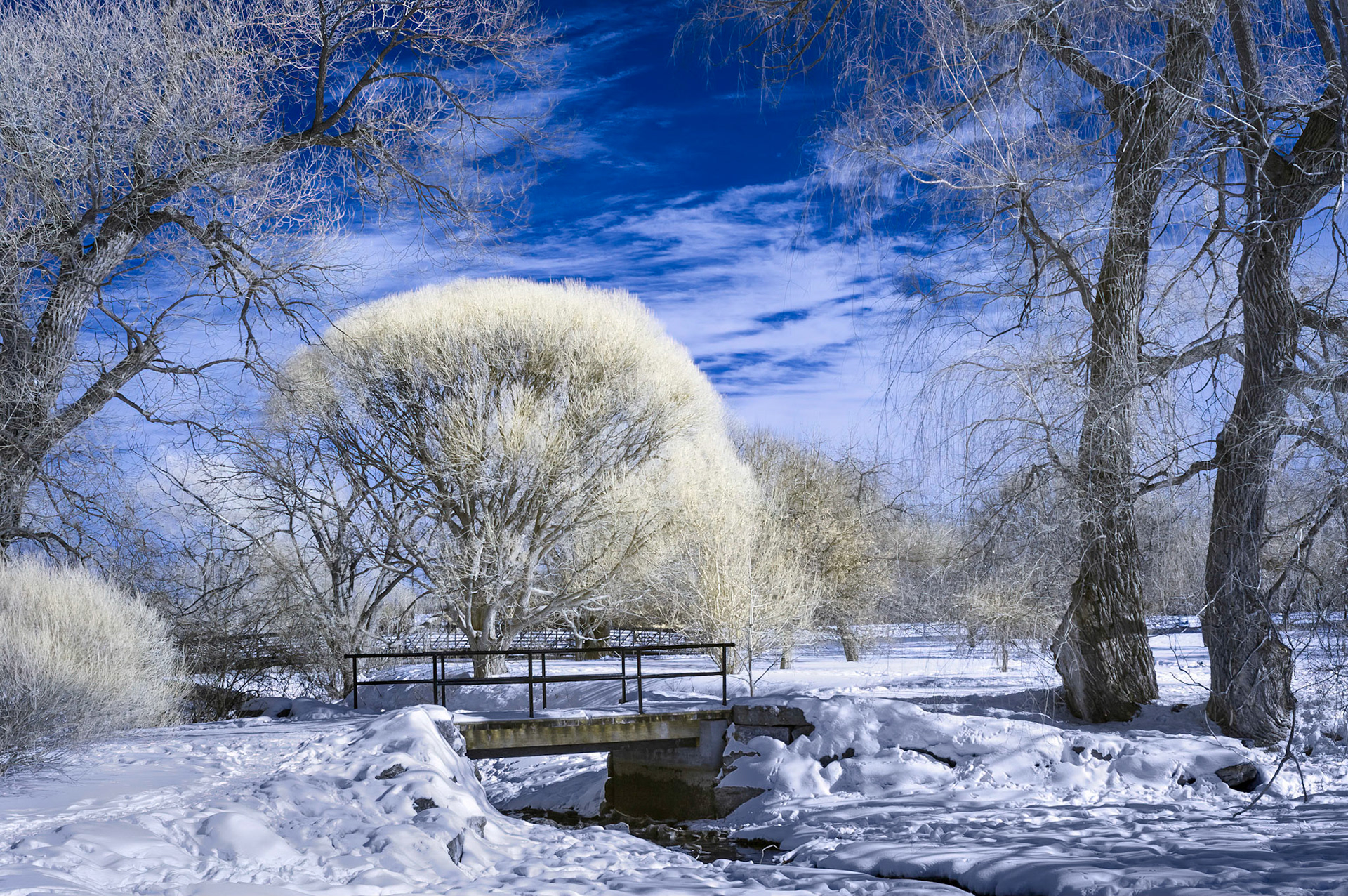
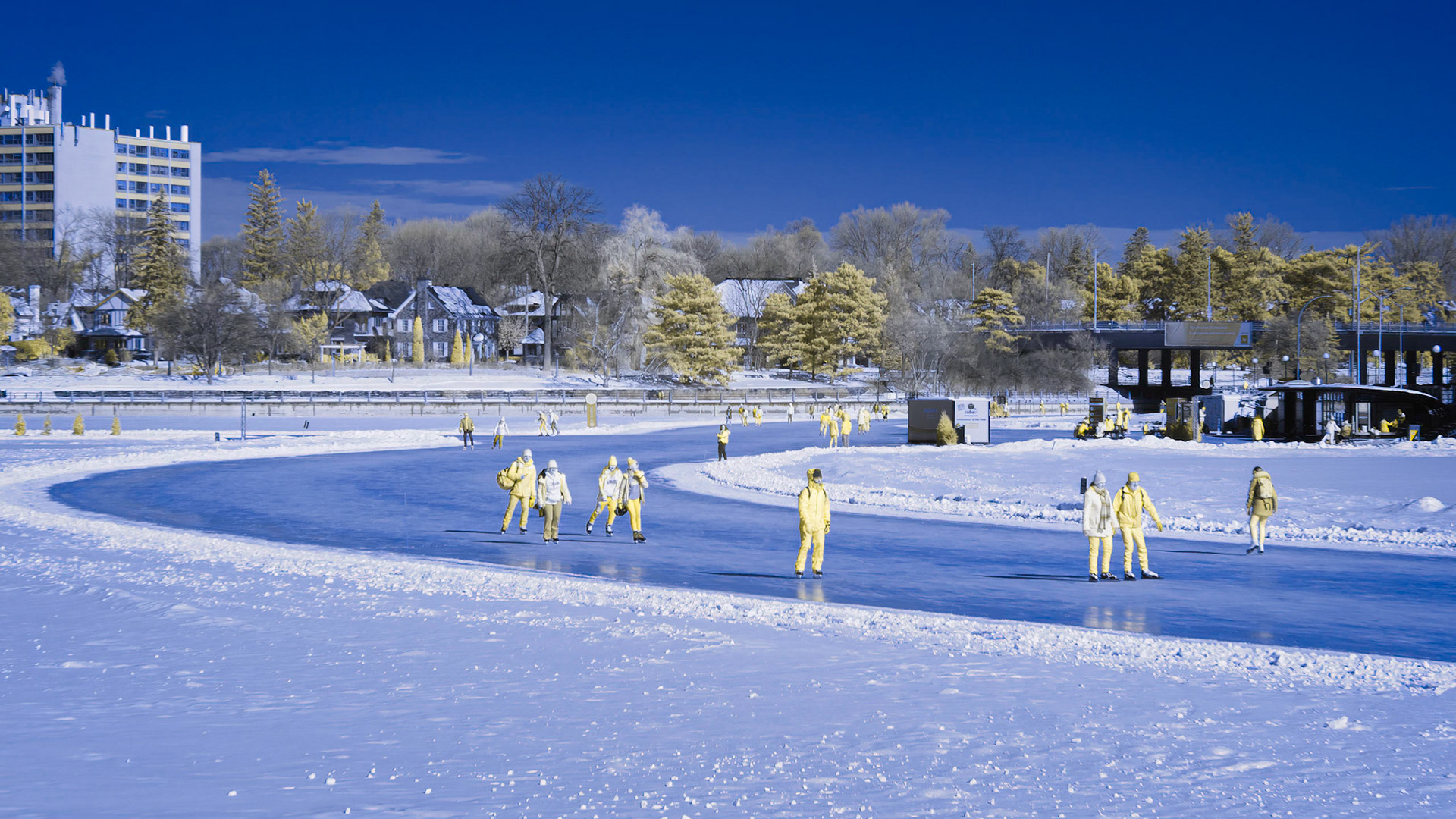
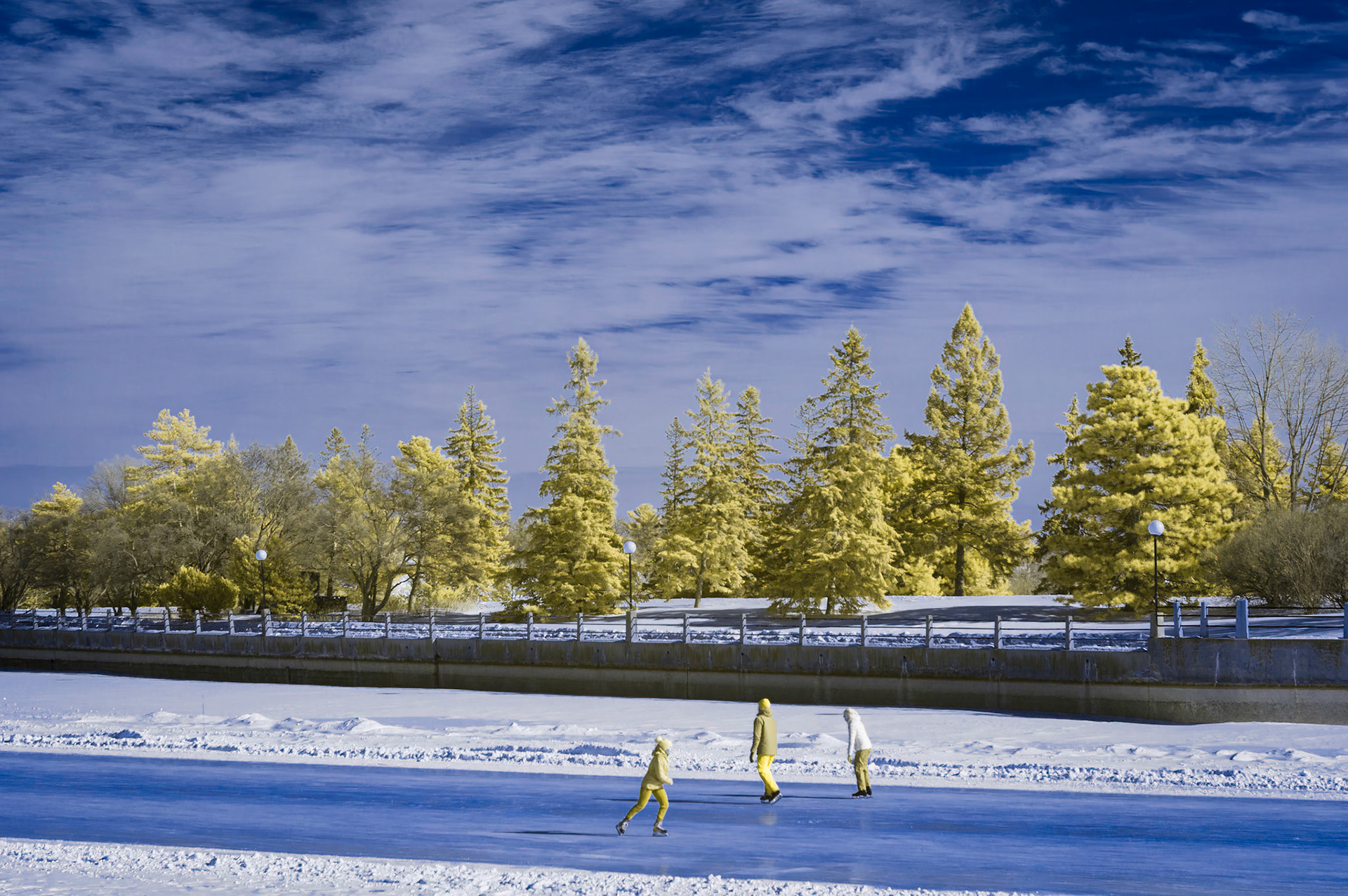
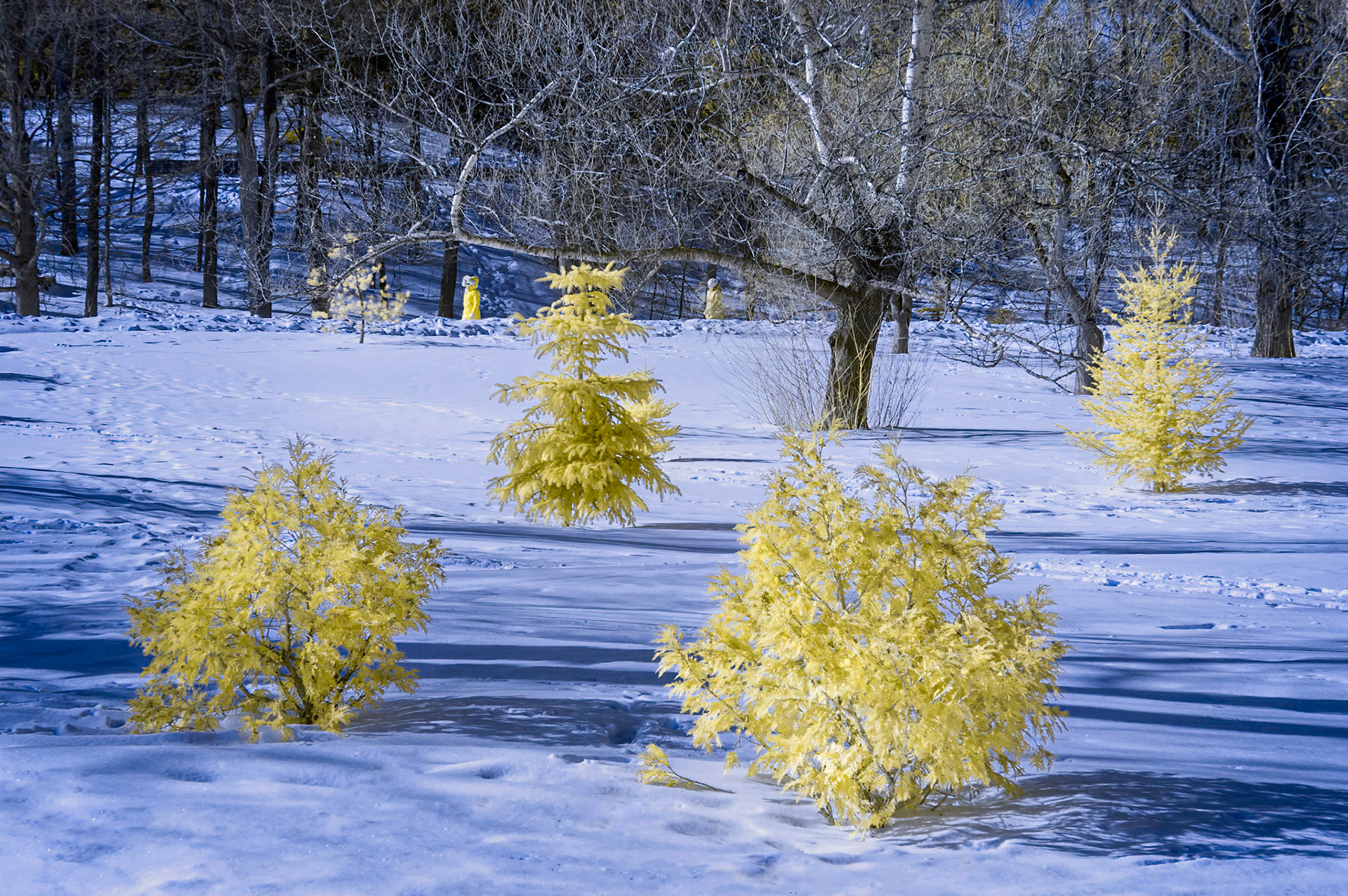
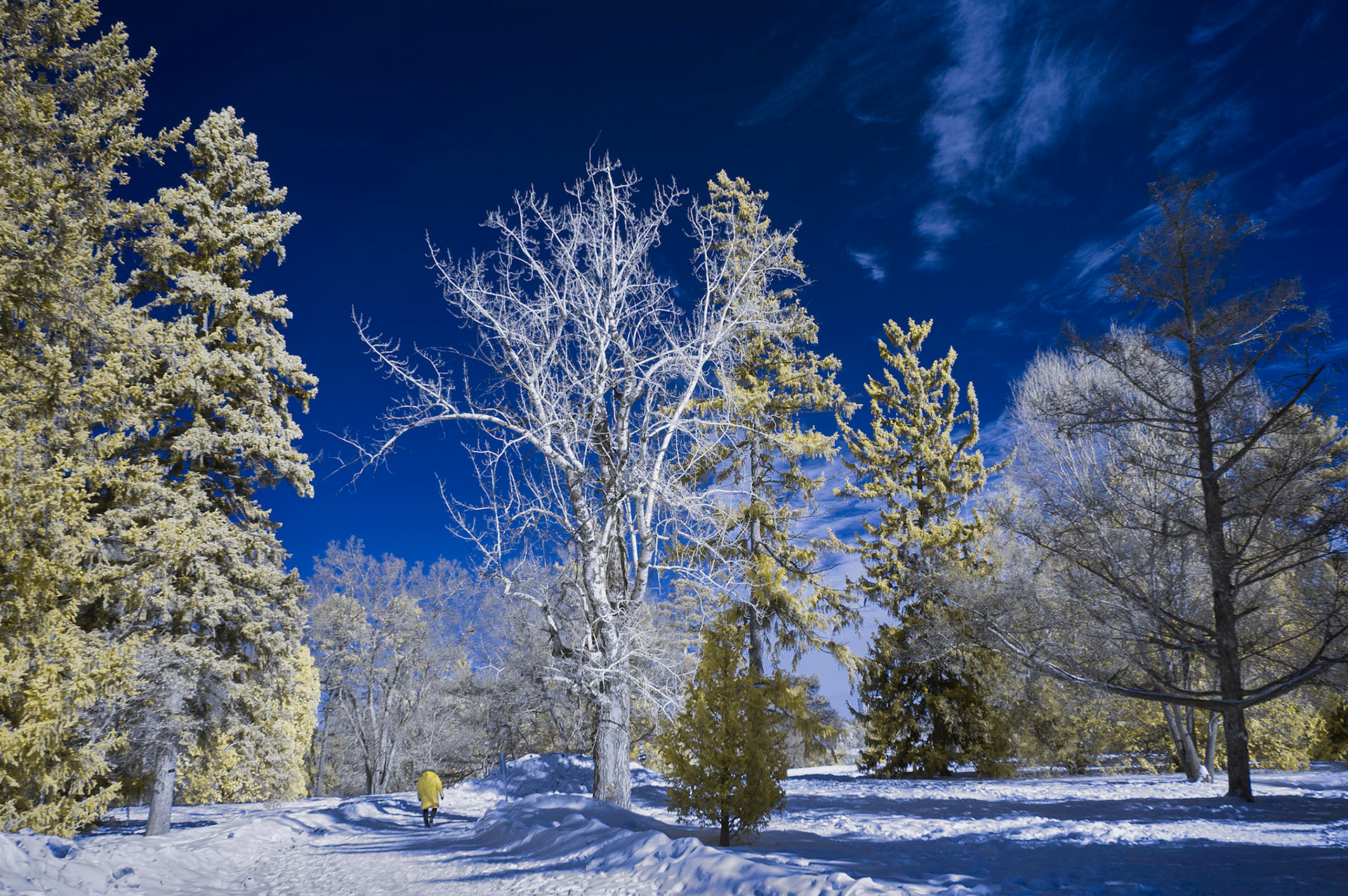
We all see the world using the visible spectrum, ranging from deep violet to deep red. But light extends much farther below and above this range. Some creatures can see into these regions, but we cannot without help. Night vision goggles are one form of help, that sense the deep infrared light given off by warm objects. Digital camera sensors can also see light in the near-ultraviolet and near-infrared. Normally, cameras are designed to block such non-visible light from reaching the sensor. But there are ways around this for the intrepid photographer. I've started experimenting with a new (old) camera that has been modified to see into the near-infrared. It also sees the oranges and reds of the visible spectrum. This offers a range of interesting possibilities to work with colour. This is usually described as false colour since infrared has no colour as we understand it. It also provides lots of latitude to convert images to black and white. For my first foray out into the world with my new toy, I wanted someplace with trees. Why? Because tree leaves strongly reflect infrared light and appear bright. Deciduous trees in full leaf would be ideal, but there are none here in February. So coniferous trees are the next best thing. Where to go? I know - the Dominion Arboretum, which is part of the Central Experimental Farm! The Arboretum is bordered on the East by the Rideau Canal, and is ice-covered in February and used for skating. I was only on-site for about an hour, but I'm pretty happy with my photos from this first attempt.






